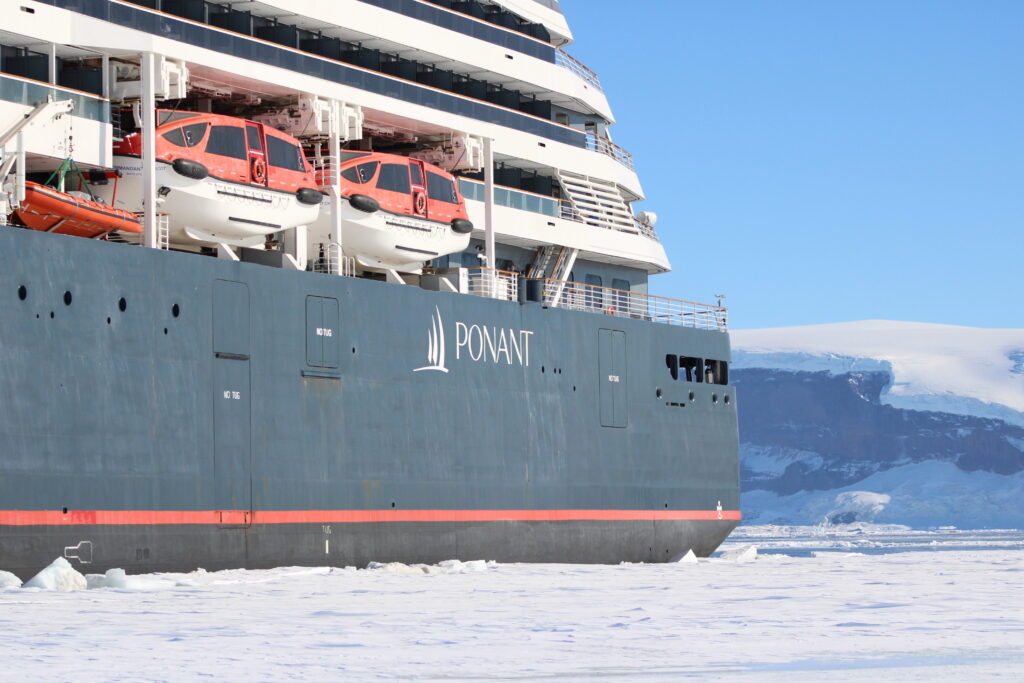
5 November, 2025 We woke up early surrounded by brilliantly glistening sea ice and were pleasantly surprised to see four of the world’s largest penguins marching (or more accurately described as shuffling) next to our vessel toward the edge of the sea ice that we had spent the previous night landed on. We were officially in the land of the emperors and had an exciting day out on the ice ahead of us.
By 8:30am, we were down in the gangway ready to embark on both of our first times on sea ice. The expedition guides had determined the day before that the ice was 1.5m thick and safe for passengers to traverse on within designated boundaries. We were completely frozen into our landing location and could not deploy zodiacs, but we were still exhilarated to be going out on the ice! It was a brisk 4°C but the sun was shining and there was absolutely no wind. Within short measure we were sweating through (and shedding!) our plethoric layers.
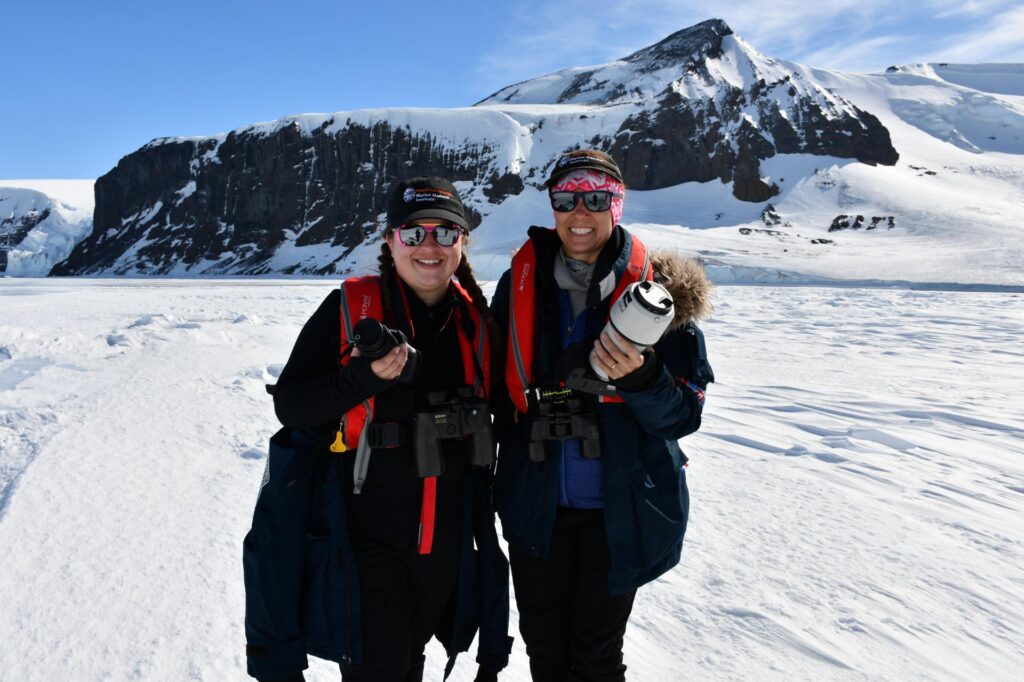
Immediately as we stepped on the ice, we had a group of 5 emperors next to the vessel on the ice edge. We walked away from the unstable ice edge and walked toward a group of seals near a landed iceberg. On our way we were greeted by the same four penguins we saw from our balcony earlier. They were very curious and vocal as they attempted to approach us. We backed away slowly (much to their disappointment) as they continued to advance until they decided to head a different direction.
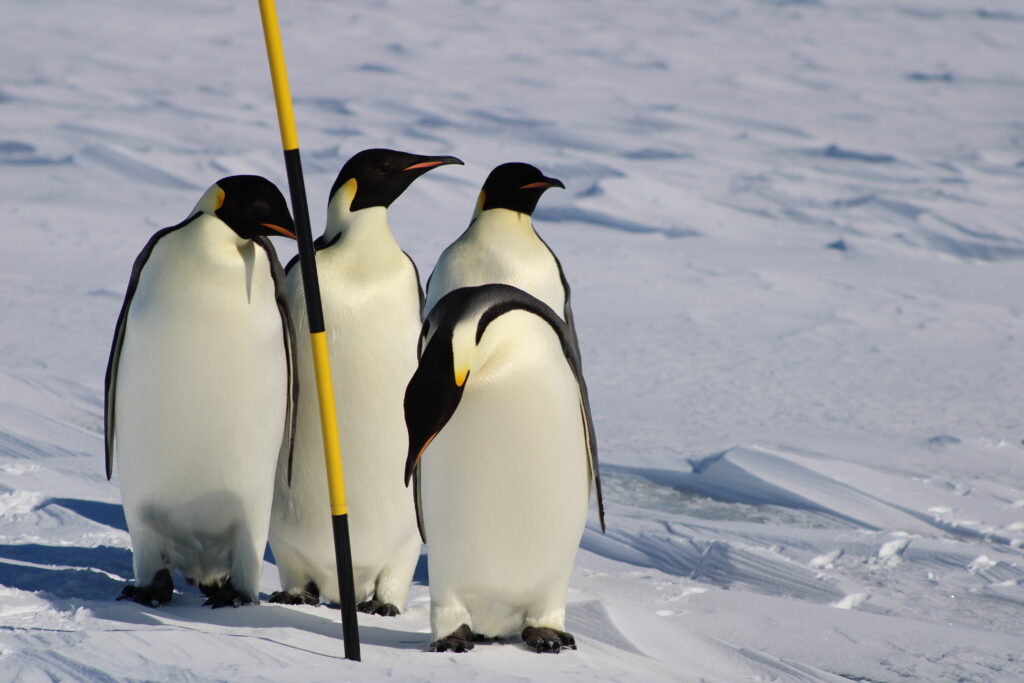
Photo: MariAnna Hinojosa
We carried on toward the sleeping seals that we had suspected were Weddell seals from a rough visual at distance, but upon arrival we were pleasantly surprised to find they were three leopard seals and a crabeater seal all sharing an apparently ideal napping location. We photographed each individual while we listened to the leopard seals snooze before carrying on to another group of seals a bit further from the boat, and beyond guest walking range. We came across a lone crabeater seal with several killer whale scars that earned him the comparison to a russet potato. As we approached the other seal group an extremely eager Adélie penguin noticed us and beelined in our direction all the while calling and sliding across the ice as fast as his little legs would propel him. When he got too close, we stepped back, which stopped him in his tracks. He assessed us for a moment before deciding we were not interesting and proceeding back in the direction he came, coincidentally in the same direction we were headed, but this time he kept a safe distance near the ice edge. We observed four more crabeater seals, two of which were pups, and with that, concluded the first of two ice walks.
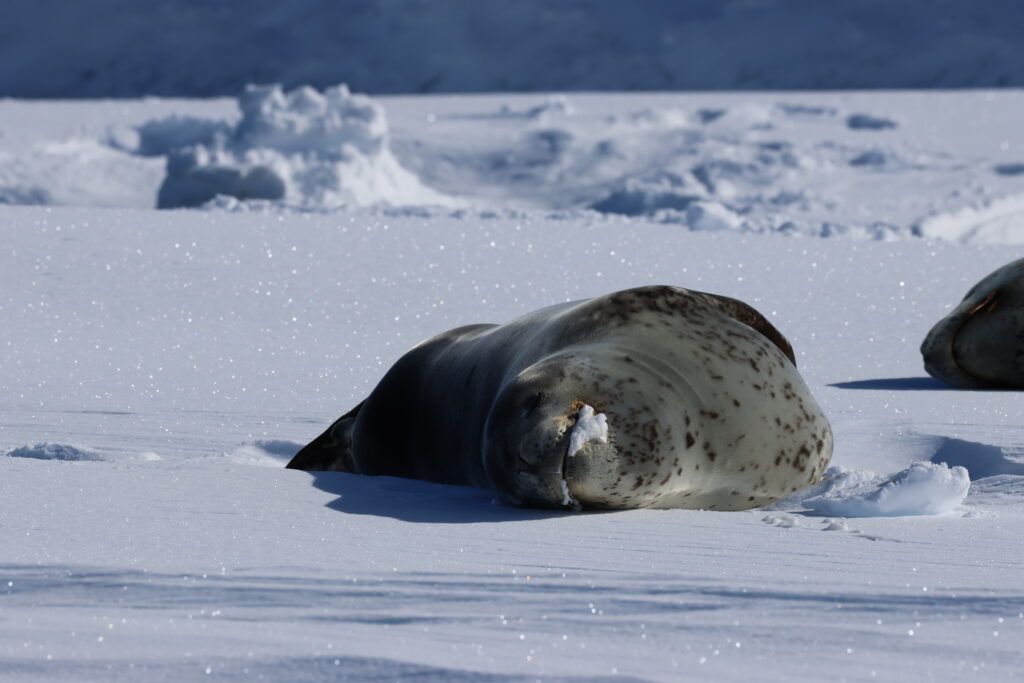
Photo: Renee Albertson

The marks on his stomach are scars from killer whale encounters.
Photo: MariAnna Hinojosa
After a quick lunch we were back out on the ice heading the opposite direction, toward Lockyer Island, south of James Ross Island and aptly named after the Royal Navy captain and one of Ross’s friends. We were heading out to survey seabirds and pinnipeds on the ice while our glaciologist companion measured a glacier on the island. Near the glacier we found seven crabeater seals, one leopard seal, and two emperor penguins, one of which stayed within a group of five seals while the other headed inland. We headed away from the ice edge towards a large landed iceberg to measure but only saw one crabeater and one Weddell seal at a distance. We were surprised by a snow petrel that quickly flew out of a hole in the corner of the iceberg that it had taken shelter in. The stillness in the air had the sounds of the melting iceberg water dripping carry over the snow, only interrupted by the occasional call of a penguin or the crunch of a boat in snow and ice.
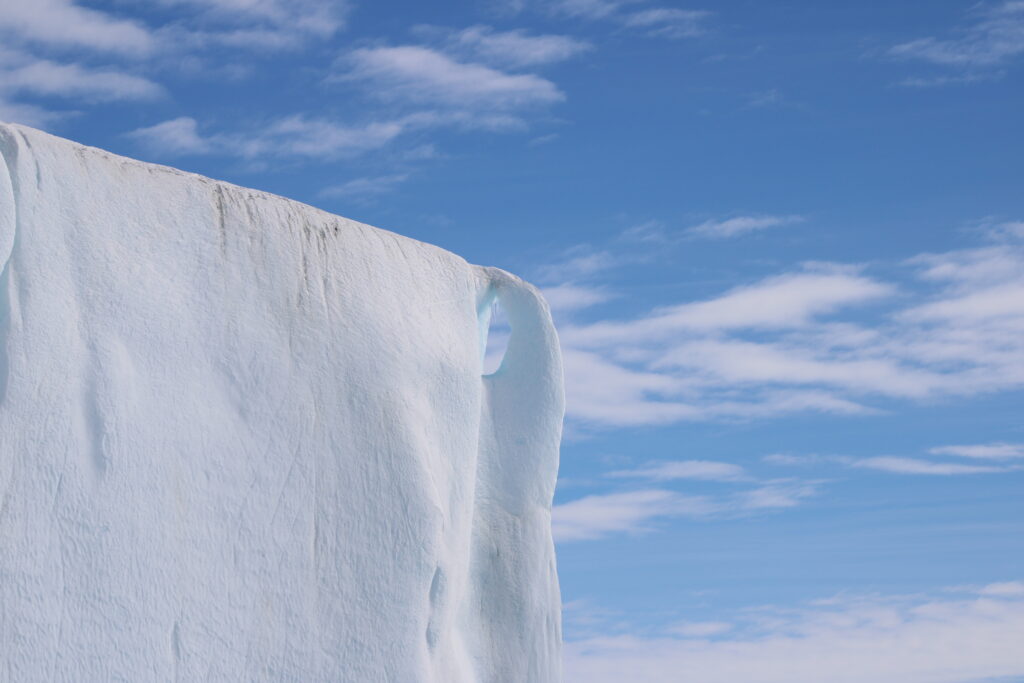
Photo: MariAnna Hinojosa
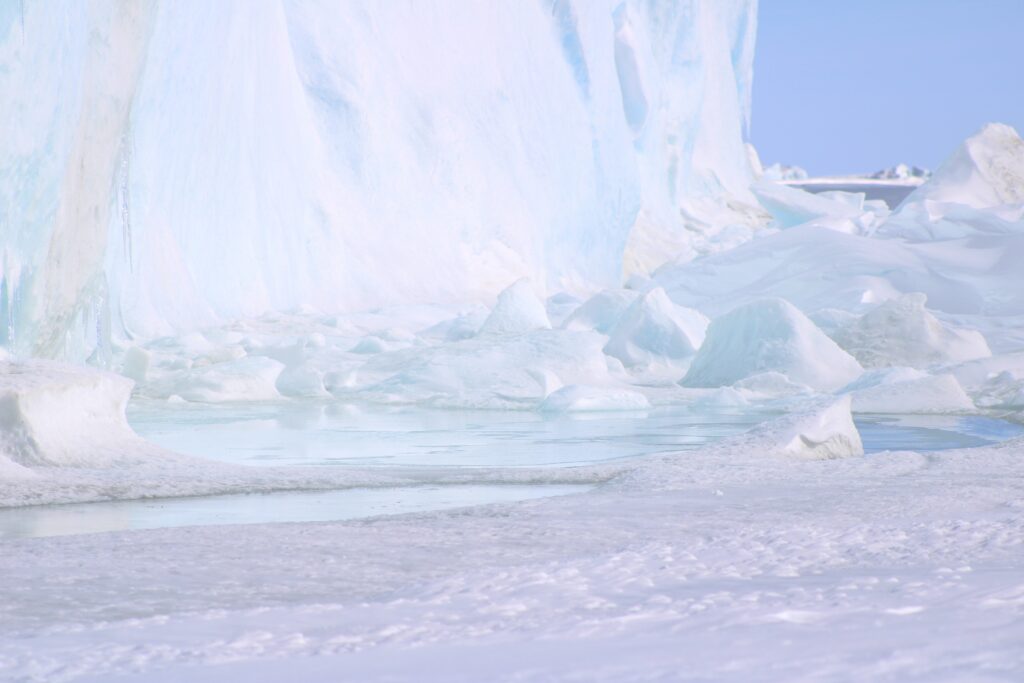
After a total of 6 hours on the ice and 13.3km (8.25mi) covered on the ice, we were sunburnt, exhausted, and exhilarated by the experience! Other notable sightings include an unidentified skua and a few kelp gulls, but alas no whales… Guests were excited to share with us the footage of their incredible opportunity to see emperor penguin chicks after braving the 6hr round trip hike to the Snow Hill Colony, one of the northernmost breeding sites for emperors. We stayed up late enough to see the largest and brightest full moon of the year (coincidentally being the beaver moon, Go Beavs!). The sun keeps the sky illuminated well after 10:00pm so it was a late night for us. We looked forward to a good night’s rest and what the next day would bring as we transited out of Admiralty Sound and around to the other side of Snow Hill Island overnight.
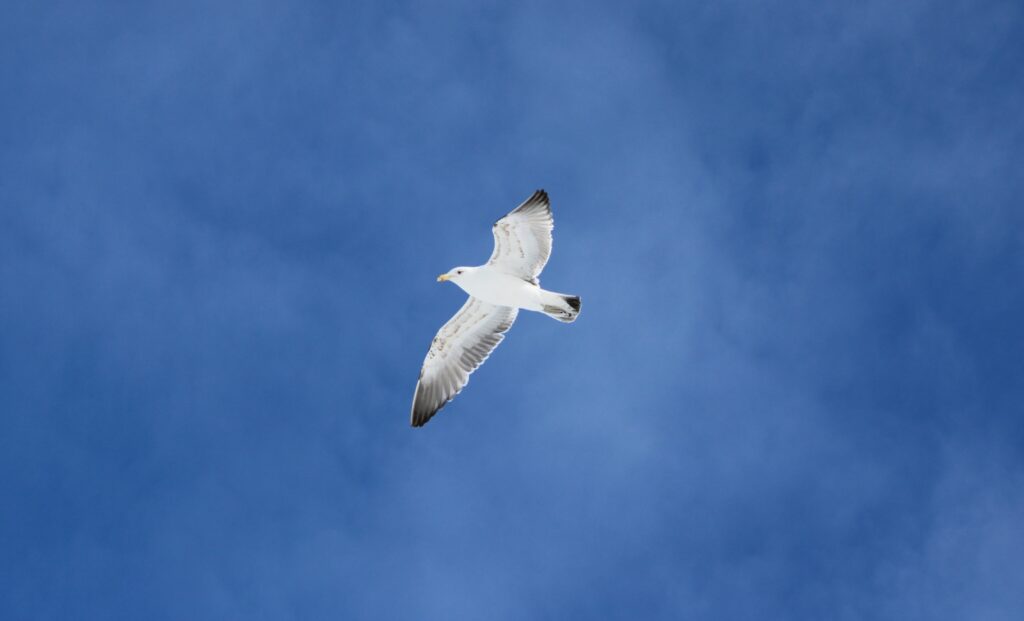
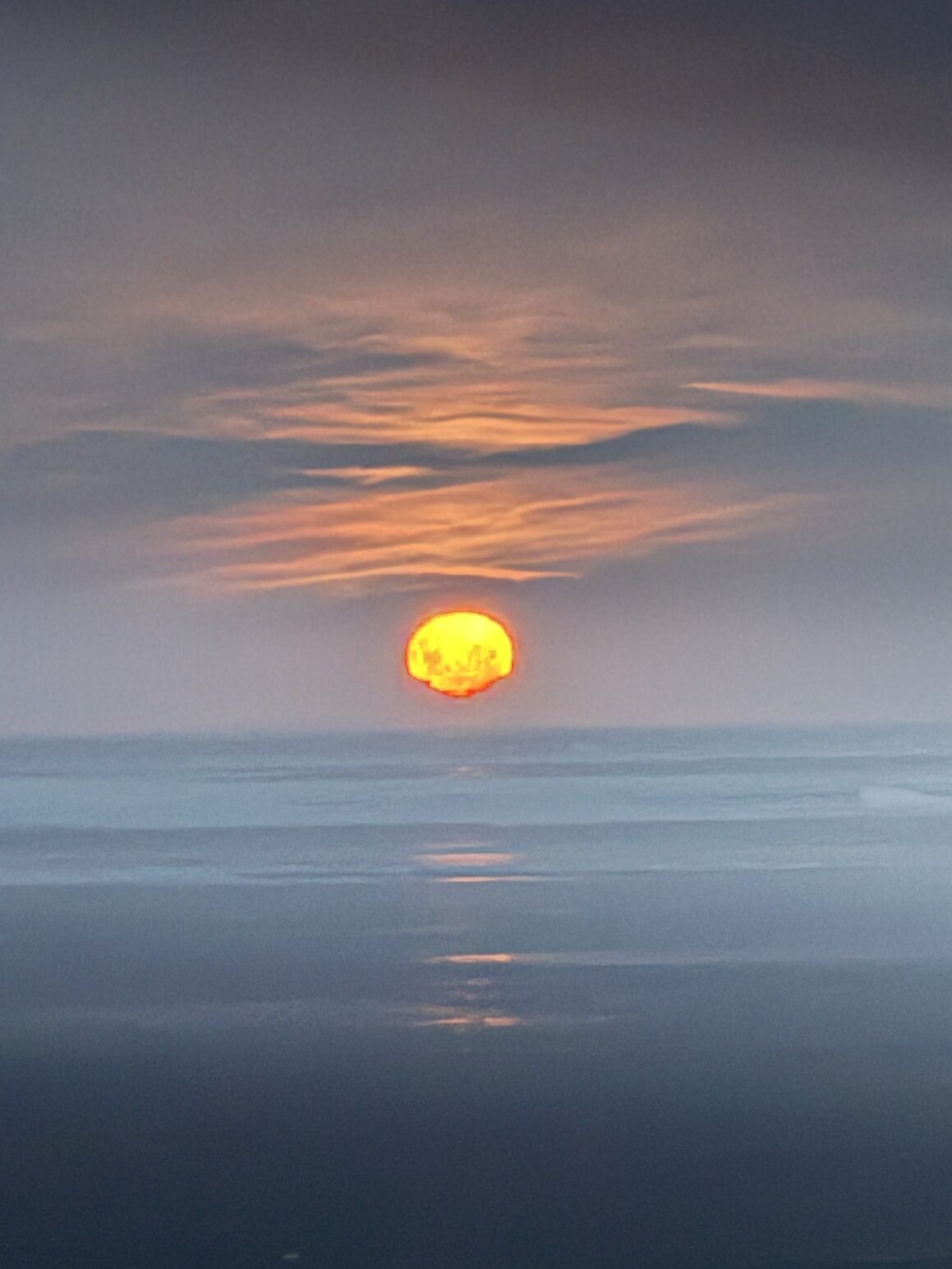
Photo: MariAnna Hinojosa, iPhone 15 max pro.
